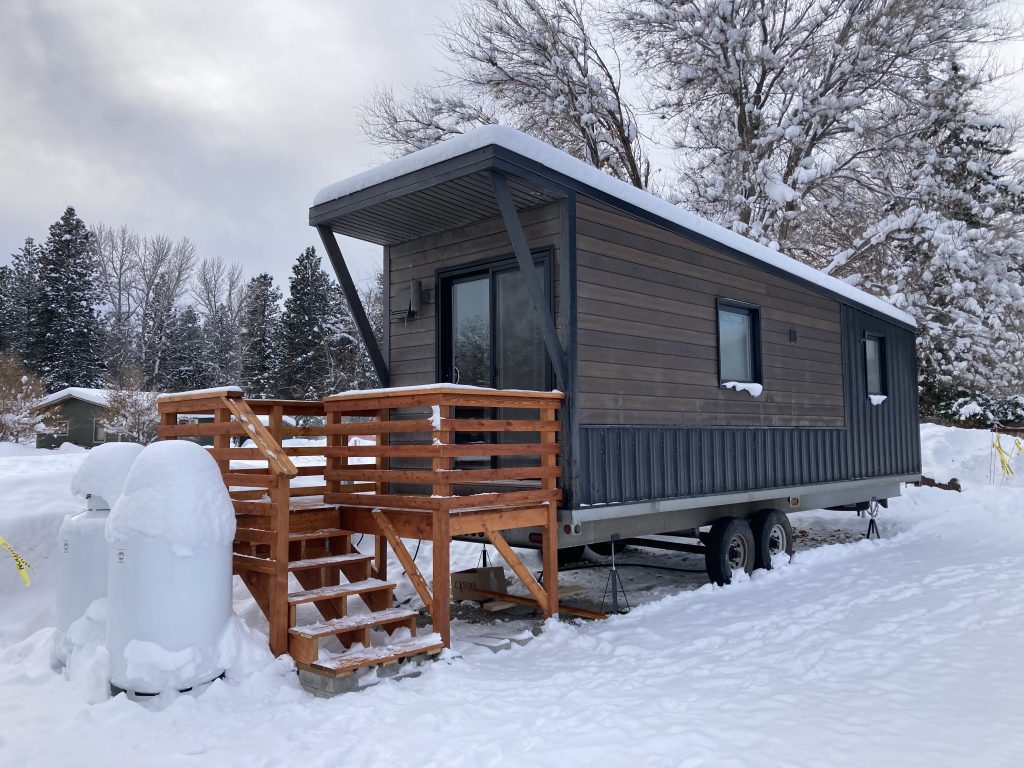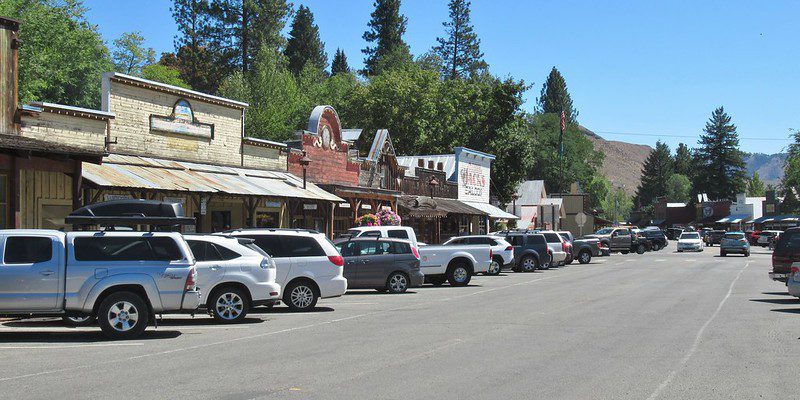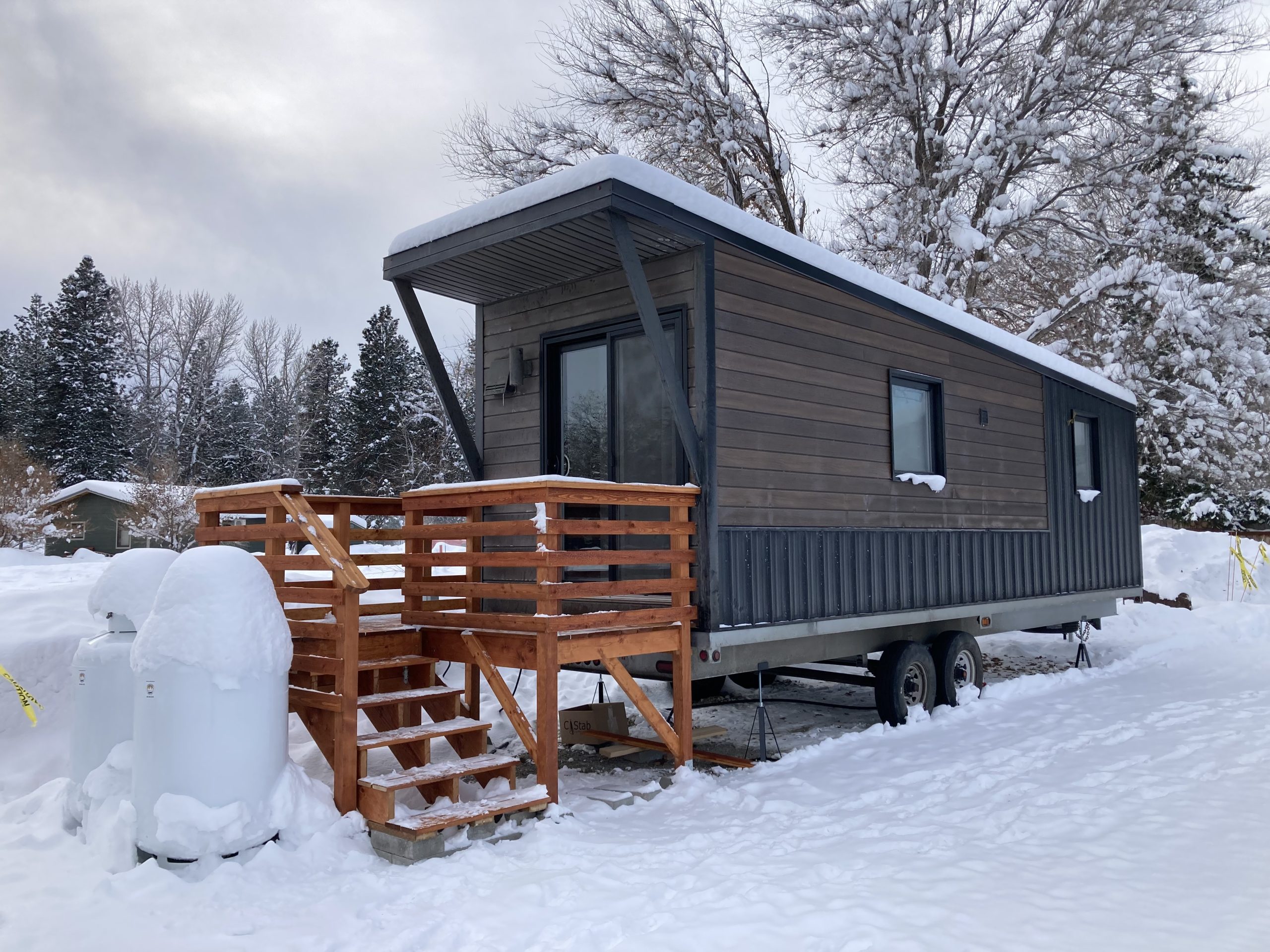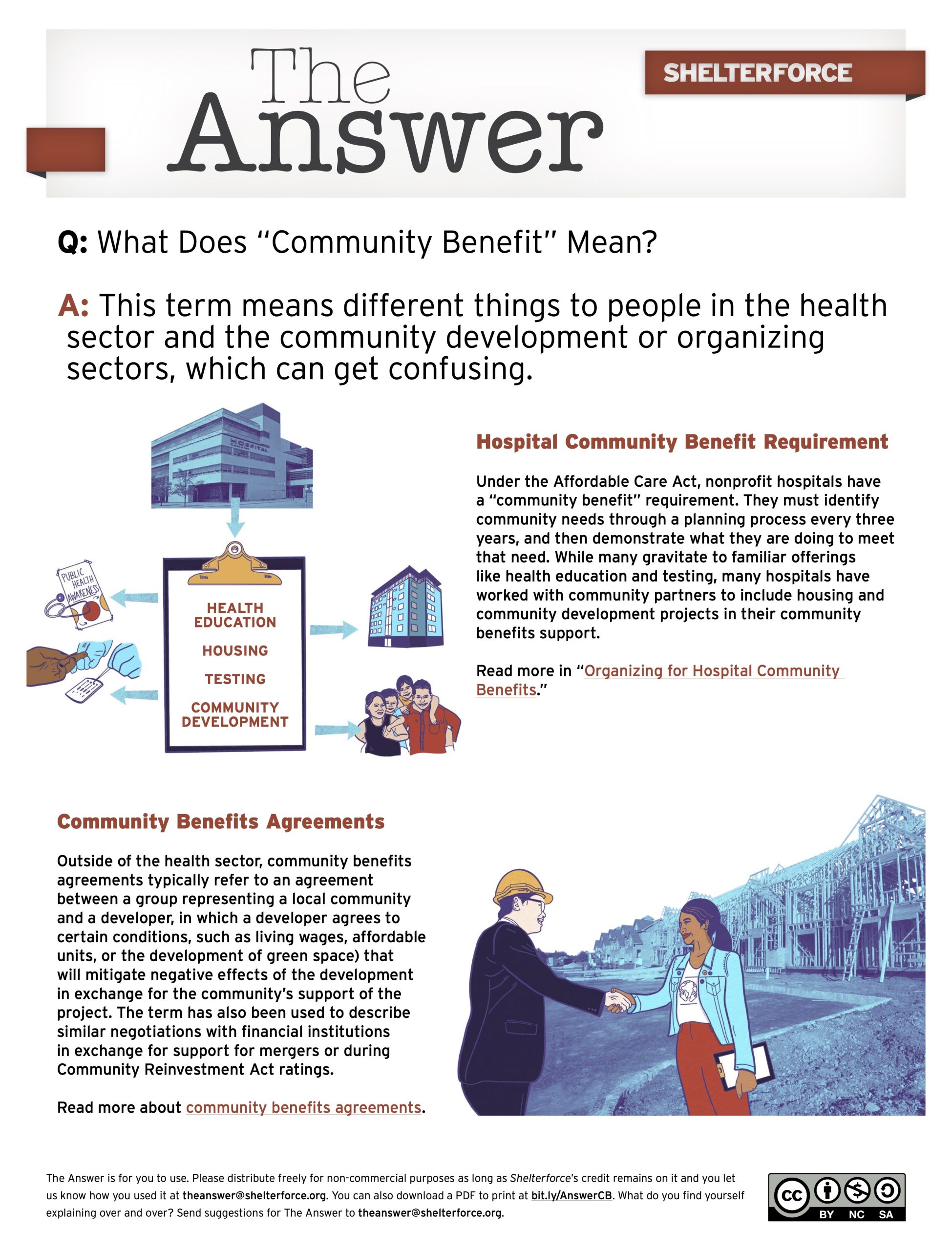
One of two tiny houses available for caregivers on staff at Jamie’s Place, a long-term care facility in Washington. The tiny houses rent for $600 a month, an amount Jamie’s Place calculated was affordable given the caregivers’ $22 an hour pay rate. Photo courtesy of Jamie’s Place
Jamie’s Place is the only long-term care facility in Washington state’s vast Methow Valley, and its ability to care for elders was threatened last year when caregivers struggled to find safe and affordable housing.
“They were worried they [would] need to move due to lack of housing,” said Rana Clarke, the executive director of Jamie’s Place. “One had been couch-surfing for over a year. . . . We have an older caregiver living in a trailer without running water.” Another employee commuted more than 30 miles over a mountain pass due to lack of local housing—time-consuming, hazardous, and unsustainable in the face of high gas prices.
In all, 5 of the facility’s 14 caregivers were housing insecure.
Unlike businesses that can shorten work hours or close for a day or two each week to address staffing shortages, Jamie’s Place couldn’t as it provides care for seniors 24 hours a day, seven days a week. The nonprofit—formally known as the Methow Valley Family Home Center Association—operates two homes, each occupied by six older adults. “We had some real concerns about being able to stay open if we were going to start losing our workforce,” says Clarke.
Staff and board members scoured the community in search of existing housing for the caregivers, even reaching out to local hotels and looking for accessory dwelling units, those smaller, more affordable units that are often called ADUs, granny flats, or mother-in-law apartments. But those avenues didn’t pan out. The vacancy rate in Methow Valley is low, less than 1 percent. A “healthy” rate—where home seekers have some choices available to them—falls in the 3 percent to 7 percent range.
The conversation then turned to the possibility of providing housing on-site at Jamie’s Place, and that’s when the team began to consider tiny houses.
Getting to a ‘Yes’ for Tiny Houses
With the notion of tiny houses in hand, Jamie’s Place staff approached the town of Winthrop in August 2022 to explore the idea’s feasibility—and officials were receptive. At the time, the town was beginning to review local policies and regulations that impact housing affordability after the council declared a housing crisis in 2021. Failing to address Winthrop’s shortage of affordable housing would “limit the ability of our community to function,” the council stated, adding that housing for workers “is essential to our local economy and sense of community.”
|
At a Glance: Methow Valley Just east of the Cascade mountains, the Methow Valley—with its easy access to public recreation lands, trails, and mountain lakes—is a popular locale for visitors and part-time landowners. It’s home to about 6,500 residents, more than 27 percent of whom are 65 and older. The valley has long faced a shortage of rental housing, which in recent years has been exacerbated by an influx of retirees and high-earning remote workers. Roughly one quarter of the full-time population lives in the valley’s two towns—Winthrop and Twisp. Jamie’s Place is located in Winthrop, the smaller of the towns. |
Town leaders were also aware of the role that Jamie’s Place plays in the lives of its residents and the community. For instance, if the facility were to close, the closest alternative would be 35 to 50 miles away, which would make visits from loved ones more challenging, especially in winter. Jamie’s Place is also well integrated in the life of the town. Children from the neighboring Montessori school are regular visitors, local musicians stop by to play the piano, and volunteer involvement is high.
“Good policy making should reflect the diverse needs of our town and support organizations that contribute [to] the community,” Winthrop Town Council member Ben Nelson said in an email to Shelterforce. “A well-rounded community finds opportunities to take care of its people at all stages of life and Jamie’s Place is at the heart of our community. Surrounded by Little Star [Montessori school], the library, medical and mental health care, and recreation, our elders are able to stay involved and close to home. This proximity provides social and economic benefits to the whole valley.”
The town began reviewing local development regulations to determine whether the tiny house project could proceed. Currently, tiny houses are not allowed outright in Winthrop. Town Planner Rocklynn Culp says she took a broad look at the provisions of the town’s comprehensive plan and zoning code and ultimately concluded that the houses could be allowed by considering them travel trailers—a use identified in the code—and identifying the use as “camping on an individual lot”—allowed in residential zones with a conditional use permit. The use is intended to be temporary, with a time limit included in the conditional use permit.
In Winthrop, as is typical in the U.S., a conditional use permit is subject to conditions developed by the town to mitigate any possible negative effects of the use and to ensure health and safety standards are met. The process of issuing a conditional use permit includes providing notice to the community and surrounding landowners, holding a public hearing, and getting approval by the council. Winthrop’s zoning code specifies several conditions for “camping on an individual lot” and each of those conditions needed to be addressed during the permitting process.
Noting that others might see the town’s zoning regulations differently than she does, Culp says, “the declaration of a housing crisis enabled me to interpret the zoning code in a way that . . . could be seen as a little bit creative” while still adhering to the letter of the code.
Ultimately, there was no community opposition, and the council unanimously supported the decision to issue a conditional use permit in September 2022. The only other permit required was a water and sewer extension permit to connect the tiny houses to the existing utility lines at Jamie’s Place.
The Tiny Houses
Once Jamie’s Place knew that the town would allow the tiny houses, staff began to look for a model that would meet their needs. They chose to work with a Canadian supplier, Minimaliste. One selling point was insulation adequate for Methow Valley winters, when temperatures often fall below zero.
The houses measure 8.5 by 28 feet—just shy of 240 square feet each. Although Minimaliste’s website suggests each could accommodate a family, with a bedroom and a dinette that converts to a bed suitable for one or two children, Clarke thought that was a stretch. “I think ideally [they are] suited for one person or a couple,” she says.
Funding from a grant and an anonymous donation covered the cost—about $100,000 for each unit, including permitting and utility connection charges. The grant funds came from the Community Foundation of North Central Washington in the form of a Game Changer grant, “intended to provide a significant funding opportunity that empowers a nonprofit organization or collaborative to take their work to the next level and move the needle on a Methow Valley community issue.”
‘ …One [caregiver] had been couch-surfing for over a year. . . . We have an older caregiver living in a trailer without running water.’
The two tiny houses were delivered in December 2022 and have already helped Jamie’s Place with retention and recruitment of employees. The first house was occupied in January by an employee who otherwise “would have moved [out of the area] for more stable housing,” says Clarke. The second house has just been occupied by an employee recruited from Mexico, which reflects the ongoing challenge of finding local staff with the mix of skills and temperament for the demanding job of caregiving.
“Caregivers assist residents with all aspects of daily living, from brushing teeth, to toileting, [to] showering. They also prepare all meals, [do] laundry, and [are responsible for] household duties,” Clarke told Shelterforce. Caregivers also grieve when residents die—Jamie’s Place is the final residence for elders who cannot live alone and whose families are not able to meet their needs for skilled care. “There is a high degree of burnout related to the physical and emotional toll,” says Clarke. “We are needing to recruit caregivers all the time.”
In deciding who would be offered the houses, Clarke says, “it was based on need—whose need for housing was critical.” The decision didn’t create tension among employees, she says, emphasizing that the caregivers are a team—individuals who are united in caring for the residents and understand that what supports one of them is good for all. Acknowledging that “need” is a subjective criterion, Clarke says Jamie’s Place may eventually develop a more systematic approach.
Tying rent to earnings is another piece of the stable-housing equation. The occupants of the tiny houses pay $600 a month in rent, an amount that Jamie’s Place has calculated is affordable given their $22 an hour pay rate. The occupants of both tiny houses work full-time—32 to 40 hours a week. Neither has a family, and, for both, the tiny houses are their sole residences.
Each employee has committed to staying at Jamie’s Place for one year, and the arrangement includes a check-in after six months to see whether the employees expect to continue working there, and to assess “their future plans and our needs,” said Clarke. “If they have not made other plans we will encourage them to begin looking for a more permanent solution. No one will be kicked out—if we get to the year marker, as long as we do not have another caregiver who needs the tiny home, it will revert to a month-to-month lease.”
If a tiny-house resident were to find full-time employment elsewhere, Clarke said Jamie’s Place would give residents 30 days to move.
Jamie’s Place sees providing housing to the employees as an interim solution. The organization would like to continue to use the houses as a recruitment tool, easing the transition to a new community but not providing housing for any individual indefinitely.
How expensive is housing in the Methow Valley? Recently, a two-bedroom cabin was listed in the Methow Valley News’s classified ads for $1,500 a month, a rent that’s in line with other recent listings. It would be affordable for a full-time worker earning about $34 an hour, or $70,000 a year; for a household earning the area median income reported in a 2020 study of the valley’s economy—$57,750—it would be burdensome. Other apartments in the area are available only to low-income residents—currently, the upper income limit for an individual living alone is $27,000 a year—and have two- to five-year waiting lists.

Winthrop is working on updating its zoning codes to provide local standards for tiny homes. Photo by Flickr user Jasperdo, CC BY-NC-ND 2.0
What’s Next for Jamie’s Place and Winthrop?
With the tiny house conditional use permit comes a review by the town after two years. The units at Jamie’s Place are now on wheels; following the two-year review, the town “may require that the units be moved or converted to ‘permanent’ anchored units” that meet zoning-code requirements, according to the permit.
“The ground seems to be shifting fairly quickly on tiny homes and there’s a lot of changes . . . at the state level that make it far easier for municipalities to permit tiny homes,” says Winthrop planner Culp, who added that the town is also working on code revisions that would provide local standards for tiny homes.
Although there’s an element of uncertainty for the tiny homes at Jamie’s Place, that’s not stopping staff from looking forward. The need for eldercare will keep growing, and Jamie’s Place is considering expanding to better meet that need. “Any future plans for Jamie’s Place are definitely going to include workforce housing,” Clarke says, reflecting the organization’s commitment to caring for its caregivers, even though no one knows exactly what that will look like.
“We are working with locals and the newly formed Caregiver Workforce Housing Committee to find additional longer-term housing options,” Clarke said. “We are coming at this from all angles.” The housing committee was formed about two months ago “to ensure that lack of housing is not an impediment to staffing Jamie’s Place,” says Patty Spencer, who’s a member of the organization’s board of directors and serves on the committee. “Lack of housing is a huge obstacle in any of our recruitment and even retention strategies,” she says.
The committee’s current focus is on finding unused ADUs that might be suitable as caregiver housing. “We’ve come to understand there are a lot of homeowners here in the valley who do have accessory dwellings,” says Spencer. “What we are trying to do is . . . first of all, identify who those people are, and [then] understand if they might be willing to rent their dwelling.”
‘We’ve come to understand there are a lot of homeowners here in the valley who do have accessory dwellings.’
The housing landscape in Winthrop may look very different two years from now. Along with developing standards for tiny homes, town officials are also developing a housing action plan that will guide the town in navigating the current housing crisis. The plan may include developing new policies, revising code language, and other steps to meet current and future housing needs.
There are also other local efforts to build more “workforce housing,” which is typically defined as housing for people making 60 to 120 percent of area median income—often teachers, first responders, nurses, and other workers. Several projects are underway or in planning.
Although the Jamie’s Place tiny house project is small, it’s an example of the links between housing and health care, and the impacts of those links throughout a community. It also models a major shift in approach to national conundrums posed by the juxtaposition of an aging population, inadequate housing stock, and a tightening labor supply.
Clarke says she “probably won’t ever forget” the moment she told her couch-surfing employee that she’d be able to live in one of the tiny houses. As the employee acknowledged how much stress she’d been carrying from uncertainty about housing, Clarke says she could “visibly see” the woman’s relief.
“She just felt so at ease . . . knowing that you could take that fear and that burden away from somebody . . . was pretty remarkable.”
“Housing is the linchpin to the long-term stability of Jamie’s Place,” Clarke told Shelterforce. It’s a linchpin in our social structure, as well, and with some creative thinking, it can become transformative.







Why not pay the caregivers a decent wage so they can find housing?